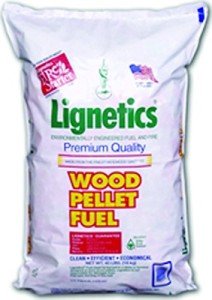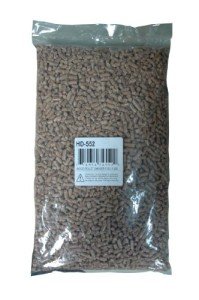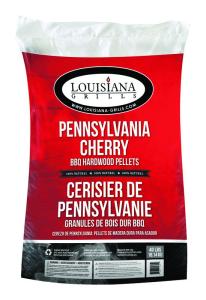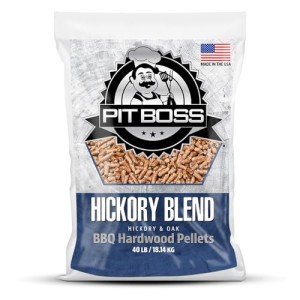As home heating solutions evolve, many homeowners are turning to more sustainable and efficient options. Among these options, premium 40 lb heating pellets have gained significant popularity due to their reliability, efficiency, and ease of use. This guide delves into the features, benefits, and considerations related to using premium 40 lb heating pellets for stoves, providing readers with the necessary information to make informed decisions.
What Are Heating Pellets?
Heating pellets are small, cylindrical pieces of compressed biomass, primarily made from sawdust, wood shavings, or other organic materials. They are designed to be burned in pellet stoves, which are high-efficiency heating appliances that convert the pellets into heat energy. Premium heating pellets undergo rigorous manufacturing processes to ensure they meet high standards of quality and performance.
Why Choose 40 lb Premium Heating Pellets?
Opting for 40 lb bags of premium heating pellets presents several advantages. These pellets are not only efficient in their heating capabilities but also provide a range of benefits that homeowners can appreciate.
1. Efficiency and Performance
- High Heat Output: Premium pellets generally have a higher density and lower moisture content, resulting in a better heat output per pound. This means homeowners can achieve a more sustained and efficient heating process.
- Cleaner Burn: A cleaner burn translates to fewer emissions and reduced ash production, making the heating process more environmentally friendly.
2. Convenience
- Easy to Store: The compact size of 40 lb bags makes them easy to store in various spaces, such as garages or basements, without requiring extensive storage arrangements.
- User-Friendly: They are designed for easy handling, allowing users to effortlessly load their pellet stoves and maintain their heating systems.
3. Cost-Effective
- Lower Heating Bills: Depending on local fuel costs, using heating pellets can be more cost-effective than other forms of heating, such as oil or electricity.
- Longevity: Since they deliver more heat per unit, heating pellets may contribute to lower overall consumption, further reducing costs.
4. Sustainability
- Eco-Friendly: Premium heating pellets are often made from recycled wood products, making them a more sustainable heating option. Their use can help reduce reliance on fossil fuels.
- Reduced Carbon Footprint: Burning biomass like wood pellets can significantly lower the carbon footprint compared to traditional fossil fuels, as they release significantly less carbon dioxide.
Factors to Consider When Choosing Heating Pellets
While premium 40 lb heating pellets offer many benefits, not all pellets are created equal. Here are some factors to consider when selecting the right pellets for your stove:
1. Quality and Certification
- Look for pellets that are certified by organizations like the Pellet Fuels Institute (PFI). Certification ensures that the pellets meet specific standards for quality and performance.
2. Moisture Content
- The moisture content in heating pellets should ideally be below 6-8%. Lower moisture levels contribute to better combustion efficiency and less ash.
3. Species of Wood
- Different wood species produce varying amounts of heat. Hardwoods like oak and hickory generally provide a higher heat output compared to softwoods.
4. Ash Content
- Ensure that the pellets have low ash content, which leads to less frequent cleaning and maintenance of your stove.
FAQs About Premium 40 lb Heating Pellets
Q1: What is the average cost of premium heating pellets?
A1: Prices can vary based on geographical location and supplier, but premium heating pellets typically range from £250 to £350 per ton.
Q2: How long does a bag of 40 lb pellets last?
A2: The burn time depends on the stove's efficiency and the desired heat setting. On average, a 40 lb bag may last anywhere from 24 to 36 hours.
Q3: Can I use heating pellets in any stove?
A3: No, heating pellets are specifically designed for pellet stoves. Burning them in a standard wood-burning stove is not recommended and can be hazardous.
Q4: How are heating pellets made?
A4: Heating pellets are produced by grinding raw biomass materials into a fine powder, drying it, and compressing it into pellet form using high pressure.
Q5: Are there any safety precautions to consider?
A5: Yes! Always follow the manufacturer’s guidelines for your specific stove, ensure proper ventilation, and routinely check the pellet stove for any maintenance needs.
In summary, premium 40 lb heating pellets present a viable alternative for homeowners seeking efficient, cost-effective, and eco-friendly heating solutions. Their ease of use, high-performance levels, and sustainability make them an attractive choice for those looking to heat their homes without compromising on comfort or environmental responsibility. As the demand for renewable heating options rises, understanding the advantages and considerations of heating pellets will enable consumers to make informed decisions, benefiting both their households and the planet.






